
Uncover practical examples and guidelines for GDPR consent in email marketing, ensuring transparent and unambiguous subscriber requests. Curious to see how it's done?

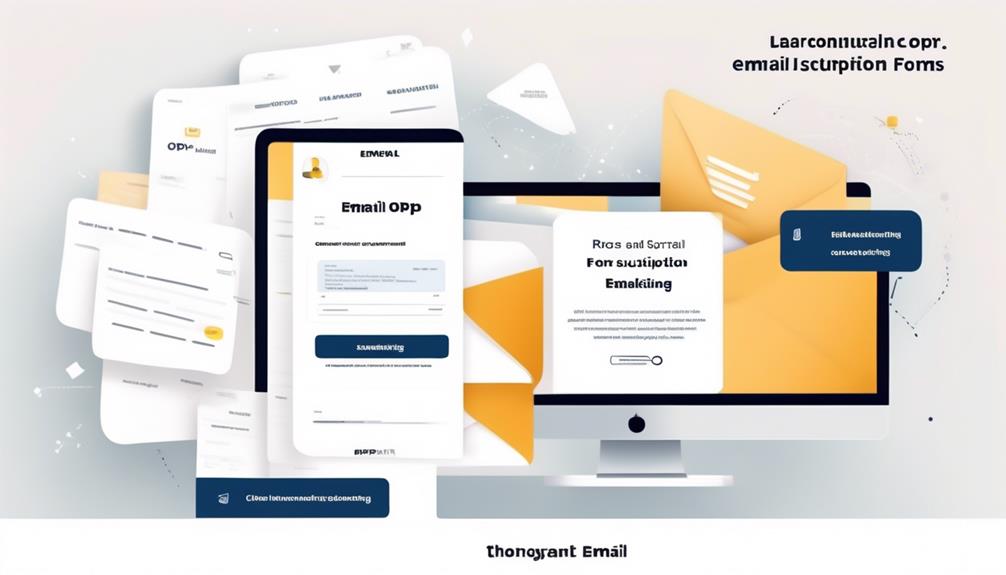

Amazon

Amazon

Amazon
We have all been in situations where we receive an unexpected email, causing us to wonder how our contact information was obtained in the first place. It’s like finding a flyer for a new restaurant in your mailbox, even though you have never expressed any interest in dining out.
As email marketers, we understand the importance of gaining consent from our subscribers before bombarding them with promotional content. However, navigating the intricacies of GDPR compliance in email marketing can be a daunting task.
How can we ensure that our consent requests are transparent and unambiguous? Let's explore some practical examples and guidelines to steer us in the right direction.
Transparent consent requests are an integral part of GDPR compliance and involve using clear, straightforward language to explain the purpose of consent and how the data will be used. When obtaining consent for email marketing or any data processing activities, it's crucial to ensure that the language used in consent forms is easily understandable.
Clearly naming your organization and disclosing any third parties involved is essential. This transparency instills trust and demonstrates respect for the user's data privacy. Avoiding complex phrasing and being transparent about the purpose of data collection and usage are key aspects of transparent consent requests.
It's important to clearly explain why the data is needed and what'll be done with it, ensuring users have a clear understanding before providing consent. By doing so, organizations not only adhere to GDPR requirements but also build credibility and trust with their audience.
AdvertisementUltimately, transparent consent requests play a pivotal role in fostering positive relationships with users and demonstrating a commitment to ethical and lawful data processing practices.
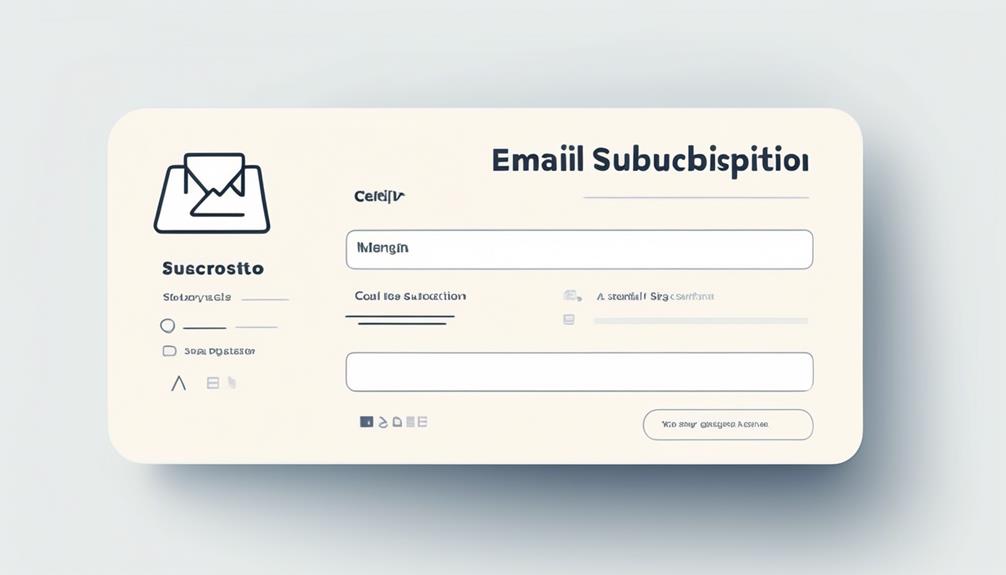
We must ensure that our consent forms don't use pre-ticked checkboxes to comply with GDPR requirements. Using pre-ticked checkboxes isn't allowed under GDPR consent requirements, as consent must be freely given.
When providing examples and guidance for GDPR email marketing consent, it's crucial to emphasize the importance of separate consent and legal policies.
This involves ensuring clear consent terms, using unambiguous language, and maintaining compliance with regulations.
To ensure clarity and transparency, it's essential to separate consent requests from legal terms and conditions in email marketing communications. When crafting clear consent terms, it's important to use language that's easily understandable and avoids ambiguity. To achieve this, consider using clear affirmative phrases that leave no room for misinterpretation.
Additionally, ensure that your consent forms are straightforward and prominently displayed, with no pre-ticked checkboxes. Furthermore, provide easy access to your privacy policies and clearly outline the process for users to withdraw consent if they choose to do so.
AdvertisementAs we move on to 'Unambiguous Language Use', it's crucial to distinctly separate consent requests from legal terms and conditions in email marketing communications.
To ensure GDPR compliance, it's essential to use clear and unambiguous language when seeking consent from individuals. When crafting consent requests, it's important to avoid combining them with other matters, such as terms of service or privacy policies. By keeping consent requests separate from legal jargon, recipients can better understand the nature of the consent being sought.
This approach also aligns with GDPR's requirement for specific and informed consent for separate things. Therefore, in our processing operations, we must be diligent in using unambiguous language to clearly present consent requests without intertwining them with legal policies.
This not only demonstrates our commitment to GDPR compliance but also enhances transparency and trust in our email marketing practices.
Compliance with GDPR regulations requires clear separation of consent requests from legal terms and conditions in email marketing communications. To ensure that your email marketing efforts are GDPR compliant, the following steps should be taken:
Advertisement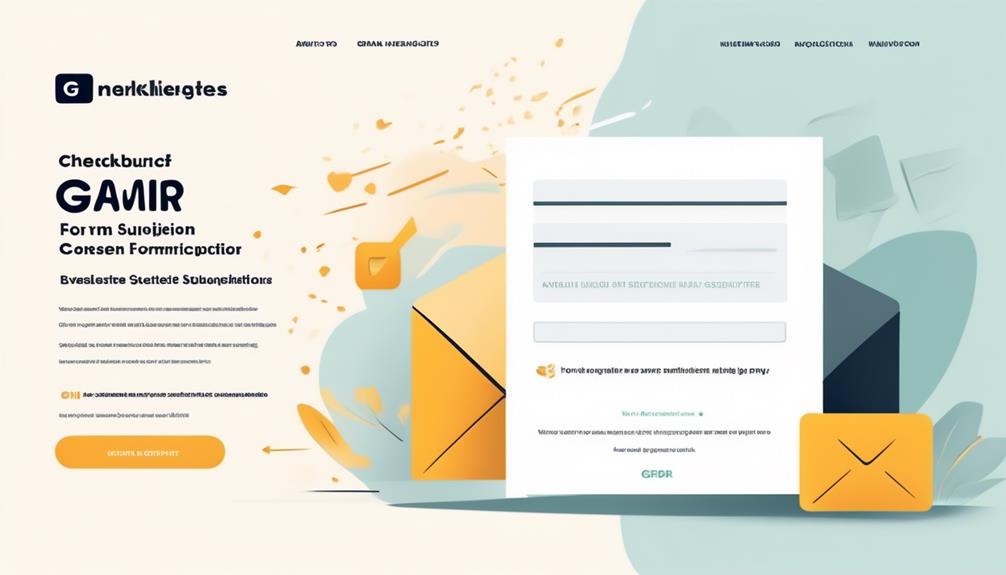
Granular consent options in email marketing allow individuals to provide specific consent for different types of data processing activities. This empowers them to make informed decisions about how their data is utilized.
This approach provides users with the ability to choose consent preferences for various marketing communications separately, including email, SMS, or postal communication. By offering clear and detailed consent choices, organizations ensure transparency and control over individuals' personal data, crucial for GDPR compliance.
With granular consent options, users can opt-in or opt-out of specific types of data usage, aligning with the GDPR's emphasis on empowering individuals to exercise control over their personal data.
This level of control not only benefits users but also helps organizations build trust and demonstrate their commitment to data privacy. Granular consent options are an essential aspect of GDPR compliance, as they enable organizations to respect users' preferences and provide them with meaningful choices regarding the processing of their personal data.

Ensuring individuals can effortlessly revoke their consent for data processing is a fundamental tenet of GDPR compliance and essential for maintaining trust and transparency in email marketing practices. GDPR requires that individuals have the right to withdraw their consent at any time, and as such, email marketers must facilitate easy withdrawal of consent.
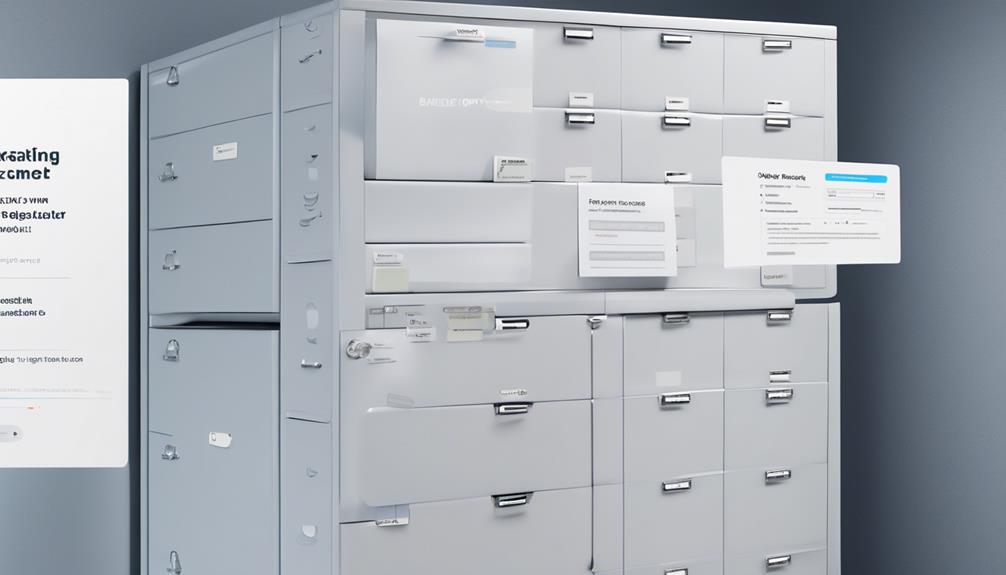
Maintaining trust and transparency in email marketing practices, we must adhere to GDPR's requirement for recordkeeping of consent choices, including the method and timing of individuals' consent, as we move into the subtopic of 'Recordkeeping for Consent'.
Recordkeeping for consent is a crucial aspect of GDPR compliance in email marketing. It involves maintaining detailed records of how and when individuals provided consent, what they were informed about at the time of consent, and the specific method used for obtaining their consent, such as through an opt-in form or another explicit action.
AdvertisementThese records are essential for demonstrating compliance with GDPR requirements and for providing evidence in case of any disputes or regulatory inquiries. Effective recordkeeping ensures that organizations can prove they obtained valid consent from individuals and that they've respected individuals' choices regarding their personal data.
Additionally, maintaining accurate consent records enables organizations to promptly honor requests for withdrawal of consent, as required by GDPR.
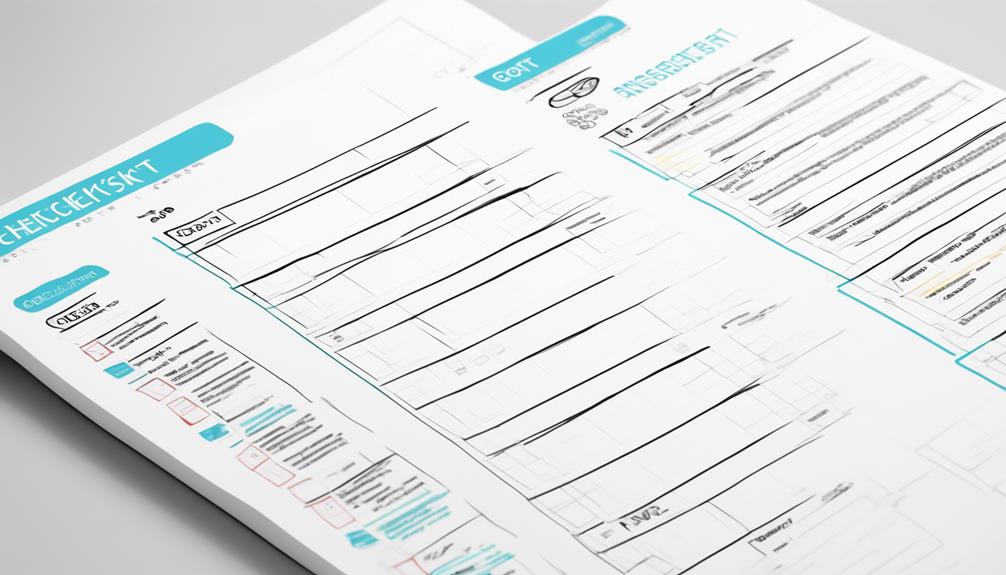
It's important to note that relying on pre-ticked checkboxes or implied consent isn't considered valid under GDPR. Seek legal advice to ensure that the information recorded for consent aligns with the legal requirements and best practices for GDPR email marketing compliance.
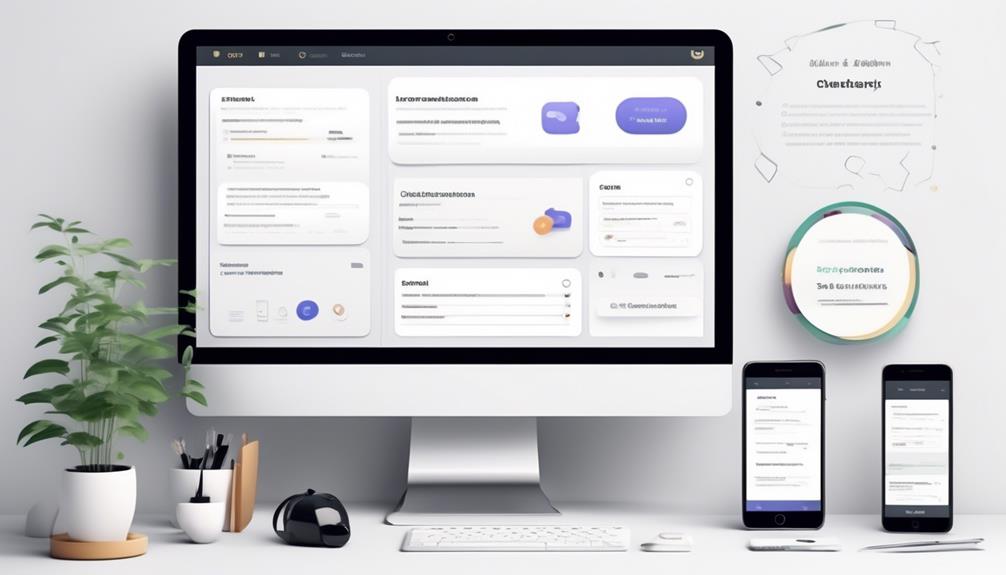
Now, let's address the crucial aspects of user consent management.
We'll explore the optimal opt-in consent process, the importance of providing consent withdrawal options, and the necessity of data retention compliance.
These points are fundamental for ensuring that our email marketing practices align with GDPR regulations and respect user privacy.
Implementing an effective opt-in consent process is crucial for ensuring compliance with GDPR regulations on user consent management. To achieve this, we need to:
AdvertisementEnsuring that users have straightforward and accessible options to withdraw their consent is a fundamental aspect of GDPR compliance and user consent management. Providing clear and easy-to-use consent withdrawal options is essential for respecting users' rights under GDPR. Users must have the ability to change their consent preferences at any time, as the basis for processing data relies on their freely given consent. To facilitate this, websites should offer consent preference centers and Data Subject Access Request (DSAR) forms that are easily accessible. Below is a table outlining some common consent withdrawal options:
| Consent Withdrawal Options | Description |
|---|---|
| Preference Center | Online platform for users to manage their consent choices |
| DSAR Form | Form for users to request access to and control over their personal data |
| Soft Opt-In | Allowing users to opt out of consent easily, even after initially giving consent |
Effective data retention compliance is essential for organizations to align their practices with GDPR and ensure the lawful processing of personal data.
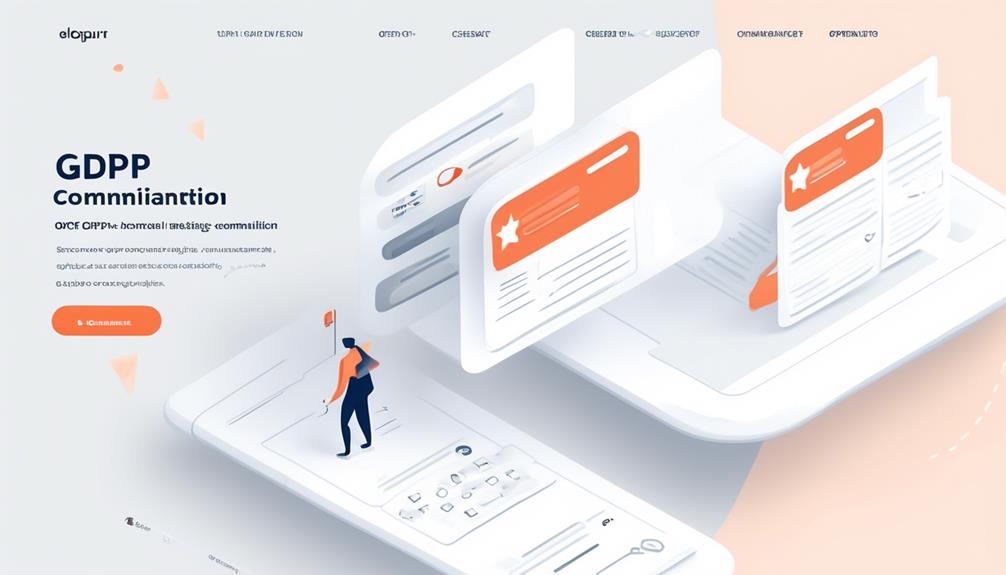
When seeking GDPR-compliant opt-in examples for email marketing, it's crucial to ensure that consent is specific, informed, and unambiguous, in line with GDPR regulations.
One effective example of GDPR-compliant opt-in consent involves using clear, unambiguous language to explain to users that by providing their email address, they're consenting to receive marketing communications. This explanation should also outline how their personal data will be used, emphasizing transparency.
Additionally, it's important to avoid pre-ticked checkboxes or any form of implied consent, as these practices don't align with GDPR requirements.
Implementing a double opt-in process for mailing lists can also serve as a best practice, although it isn't explicitly mandated by GDPR. This process involves sending a confirmation email to the user after they initially opt-in, requiring them to take a further action to confirm their subscription.
It's also crucial to provide users with a simple way to withdraw their consent, as per GDPR guidelines, ensuring that they can easily opt out of receiving marketing communications.
Advertisement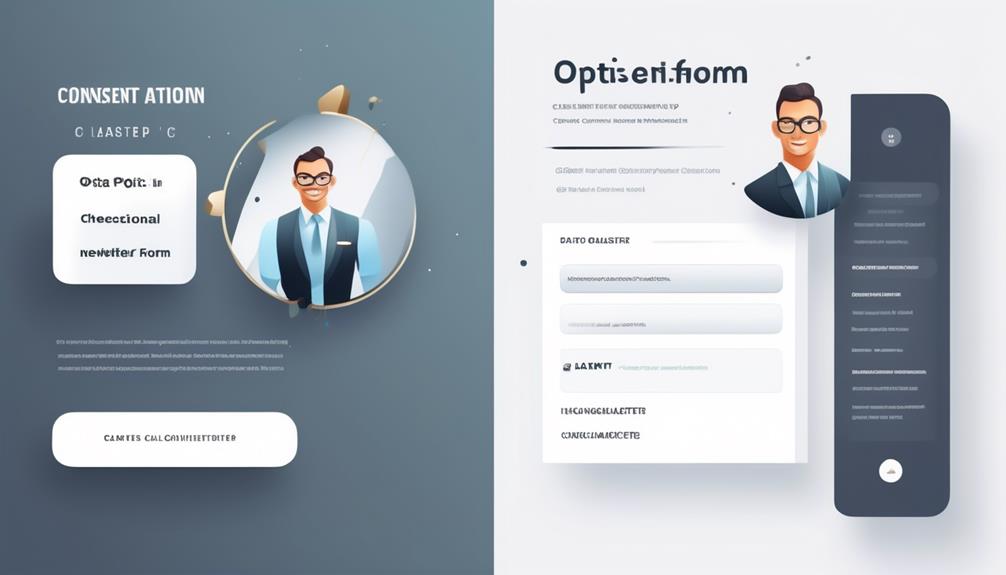
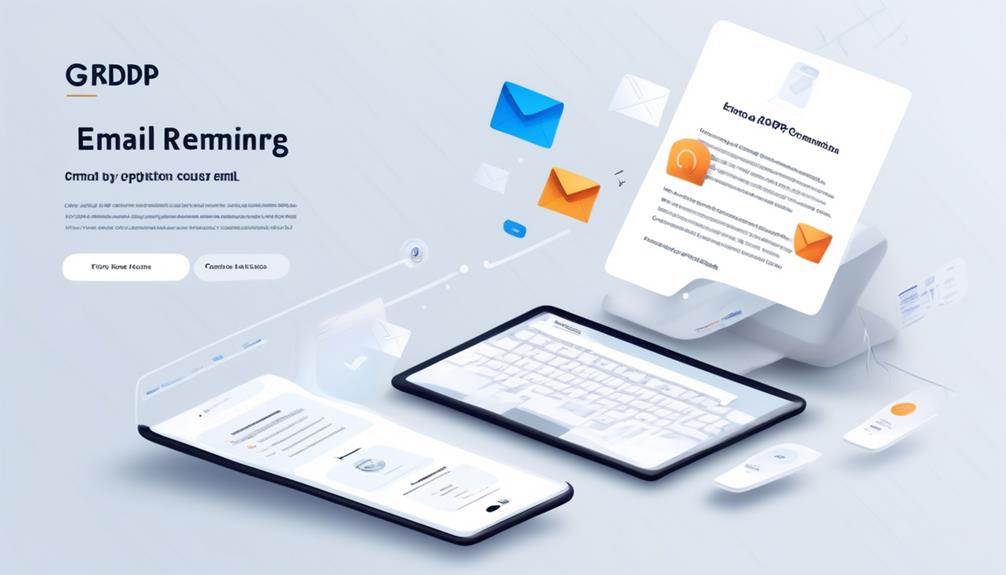
As we shift our focus to 'Effective Permission Reminders', it's essential to maintain clarity and transparency in our communication with users regarding their consent for email marketing. Effective permission reminders should clearly explain why the data is being collected and how it will be used to maintain transparency with users. Utilize clear and specific language to request consent, avoiding pre-ticked checkboxes or vague statements to ensure understanding and meet GDPR requirements. Consider implementing double opt-in consent for mailing lists as a best practice, even though it is not explicitly required by GDPR, to verify and record user consent. Provide users with easy ways to manage their consent choices, including the ability to withdraw consent and access a consent preference center on the website, as required by GDPR. Below is a table summarizing the key points for creating effective permission reminders in GDPR email marketing.
| Key Points | Description |
|---|---|
| Clearly Explain Data Collection and Use | Explain why the data is being collected and how it will be used to maintain transparency with users. |
| Utilize Clear and Specific Language for Consent | Avoid pre-ticked checkboxes or vague statements to ensure understanding and meet GDPR requirements. |
| Provide Easy Consent Management Options | Offer users easy ways to manage their consent choices, including the ability to withdraw consent and access a consent preference center on the website. |
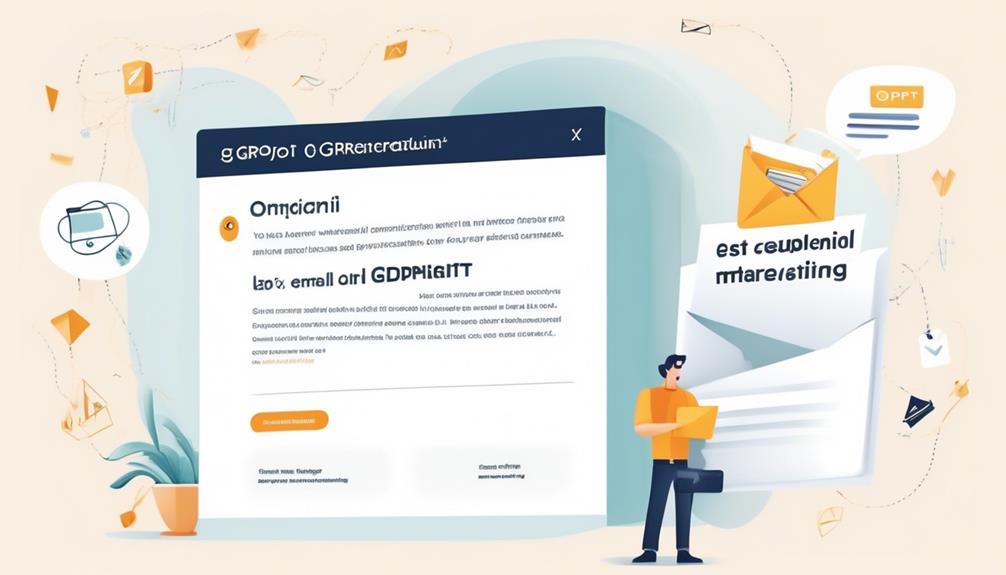
In our pursuit of GDPR compliance in email marketing, we exemplify best practices through clear and explicit consent procedures that prioritize user understanding and choice.
When implementing GDPR compliant email marketing, we ensure that consent is freely given, specific, informed, and unambiguous. We avoid non-compliant checkbox usage, such as pre-ticked checkboxes and implied consent, as they violate GDPR.
Additionally, we consider implementing a double opt-in consent request for mailing lists, although it's not explicitly required by GDPR. We also provide alternative methods for unambiguous consent, such as pop-ups asking users to enter their email address with clear phrases and labeled buttons.
Furthermore, we prioritize making it easy for users to withdraw consent, and we maintain a record of consent choices, including when, how, and what users consented to, in accordance with GDPR requirements.
We write GDPR consent forms by ensuring they're freely given, specific, informed, and unambiguous, as required by GDPR.
We avoid pre-ticked checkboxes and use clear, easy-to-understand language in consent requests.
AdvertisementConsider implementing a double opt-in consent request for mailing lists and provide alternative methods for obtaining unambiguous consent.
Allow users to easily manage their consent choices and provide a way for them to withdraw consent, as per GDPR requirements.
We comply with GDPR email marketing by obtaining freely given, specific, informed, and unambiguous consent. We avoid non-compliant checkbox usage, implement double opt-in consent when possible, and utilize alternative methods for unambiguous consent, such as clear pop-ups and labeled buttons.
We also provide users with the ability to manage their consent choices and easily withdraw consent. These practices ensure compliance with GDPR requirements for email marketing.
We ensure GDPR compliant consent by using clear, specific, and unambiguous language in our consent requests. We identify ourselves and disclose any third parties involved.
AdvertisementTo avoid non-compliant checkbox usage, we require users to actively select unticked checkboxes for consent. For mailing lists, we implement double opt-in consent requests, where users confirm their email address.
Alternative methods like pop-ups with clear phrases and labeled buttons also comply with GDPR.
An example of a consent email would be one that clearly outlines what data is being collected and how it will be used. It provides an option to easily withdraw consent and uses explicit language for permission.
It's important to avoid pre-ticked checkboxes or implied consent. Double opt-in requests are a best practice. Using clear phrases and labeled buttons can also help ensure unambiguous consent.
AdvertisementYes, I can provide examples of GDPR-compliant email marketing consent. One example is clearly outlining how the subscriber’s data will be used and obtaining explicit gdpr consent for email marketing. Another example is providing a clear and easy opt-in process for subscribers to give their consent for email marketing under GDPR regulations.
In conclusion, ensuring GDPR compliance in email marketing is crucial for protecting the privacy and rights of subscribers. By implementing transparent consent requests, granular options, and easy withdrawal processes, email service providers can help users maintain compliance.
Let's strive to avoid pre-ticked checkboxes and provide effective permission reminders to create a harmonious and respectful email marketing environment.
Together, we can navigate GDPR requirements and build trust with our subscribers, like a well-choreographed dance.
Advertisement
Amazon
 A Practical Guide (Elgar Practical" />
A Practical Guide (Elgar Practical" />
Amazon

Amazon

Natali – Editor in Chief (Strategy and Mastery, AI Expert) Natali, our Editor in Chief, is the driving force behind our content’s strategic direction. With a keen eye for detail and a deep understanding of market trends, Natali ensures that our content is top-notch and strategically aligned with our client’s goals. Her expertise in AI helps to seamlessly integrate advanced technology into our marketing strategies, pushing the boundaries of conventional marketing.
Related Topics:5 Essential Tips for GDPR-Compliant Email Campaigns
Why Is GDPR Consent Vital for Email Marketing?
Continue Reading
Advertisement
Tread carefully through the complexities of GDPR compliance with these seven essential tips for email marketers, ensuring your campaigns are legally sound and effective.



Email Marketing That Doesn't Suck: Have Fun Writing Emails Your Subscribers Will Want to Read (and That Will Actually Make You Money!)
Amazon

Email Marketing Rules: 184 Best Practices to Optimize the Subscriber Experience and Drive Business Success
Amazon

Email Marketing Success: Nurturing Leads and Driving Conversions with 99+ Email Marketing Templates, Including Cold Email Strategies (Mastering . The Ultimate Toolkit for Success)
Amazon
As professionals in email marketing, we must carefully balance engaging our audience with respecting their privacy. With stricter data protection laws in the current digital landscape, it is crucial to find a compromise that honors our subscribers’ rights while still effectively connecting with them.
As we navigate the complexities of GDPR compliance, there are seven key tips that can significantly impact our email marketing strategies and ensure that we stay on the right side of the law. These tips not only address the legal requirements but also contribute to more targeted and effective campaigns, reduced risk of fines and penalties, improved data security and privacy practices, and a strengthened brand reputation.
Ensuring compliance with GDPR consent requirements for email marketing is crucial for maintaining data privacy and avoiding legal issues. Under the GDPR, obtaining explicit consent is mandatory for processing personal data for email marketing. This means that individuals must freely, specifically, and unambiguously consent to their data being used for marketing purposes.
To manage consent effectively, email marketers should implement robust consent management systems to track and record consent from subscribers. Additionally, the opt-in method should be used, and proof of consent must be retained to demonstrate compliance. Legacy contacts also require repermissioning to ensure that their consent meets GDPR standards.
Every marketing communication should include a clear and easy-to-access unsubscribe link, allowing individuals to opt-out at any time. It's essential to regularly remind subscribers of their right to withdraw consent and provide them with easy mechanisms to do so.
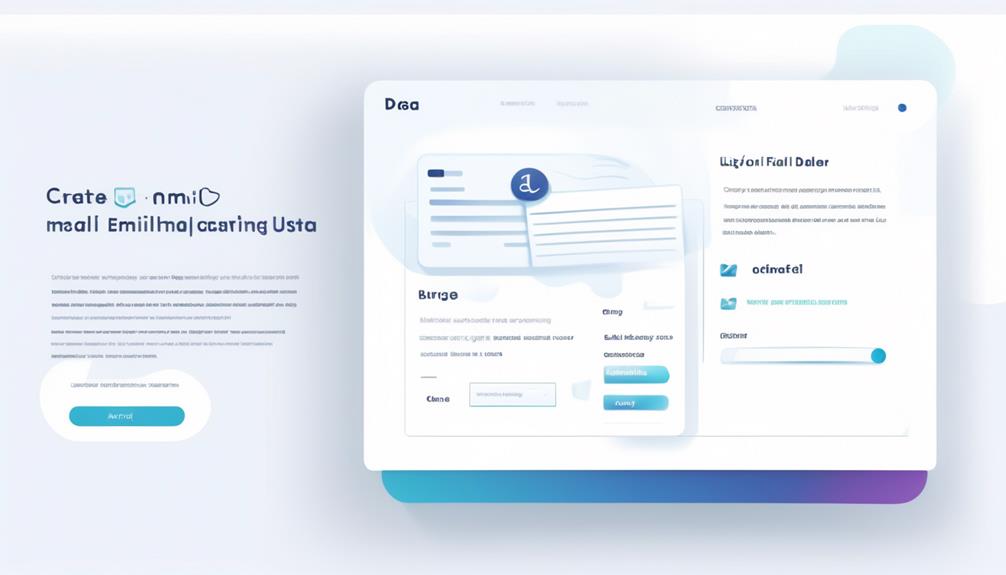
As email marketers, we must prioritize limiting the data we collect, securing the storage of that data, and regularly reviewing the information we have.
By only gathering the necessary personal data and regularly reassessing what we store, we can reduce the risk of privacy violations and data breaches.
AdvertisementImplementing clear processes for data deletion and obtaining explicit consent for each purpose will further ensure GDPR compliance.
When it comes to email marketing, securely storing only the essential personal data is crucial to align with data minimization practices and maintain GDPR compliance. It's vital to evaluate and minimize the amount of personal data collected and stored, ensuring it aligns with the GDPR's data minimization principle. Regularly reviewing and updating data storage practices is essential to ensure compliance with GDPR requirements. Employing pseudonymization and encryption techniques can reduce the amount of personally identifiable information stored, in line with GDPR's data minimization principles. Here's a table highlighting key points for secure data storage in email marketing:
| Key Points | Description |
|---|---|
| Minimize Data Collection | Evaluate and minimize the amount of personal data collected and stored. |
| Pseudonymization | Consider employing pseudonymization techniques to reduce personally identifiable information. |
| Encryption Techniques | Use encryption to secure stored personal data in compliance with GDPR. |
Implementing these practices ensures secure data storage, aligns with GDPR requirements, and protects personal data privacy.
Regularly reviewing and minimizing the personal data collected is essential to ensure compliance with data minimization practices under GDPR. When it comes to email marketing, data review is crucial for maintaining GDPR compliance and respecting privacy rights of EU citizens.
Here's how to effectively implement data minimization practices:
Advertisement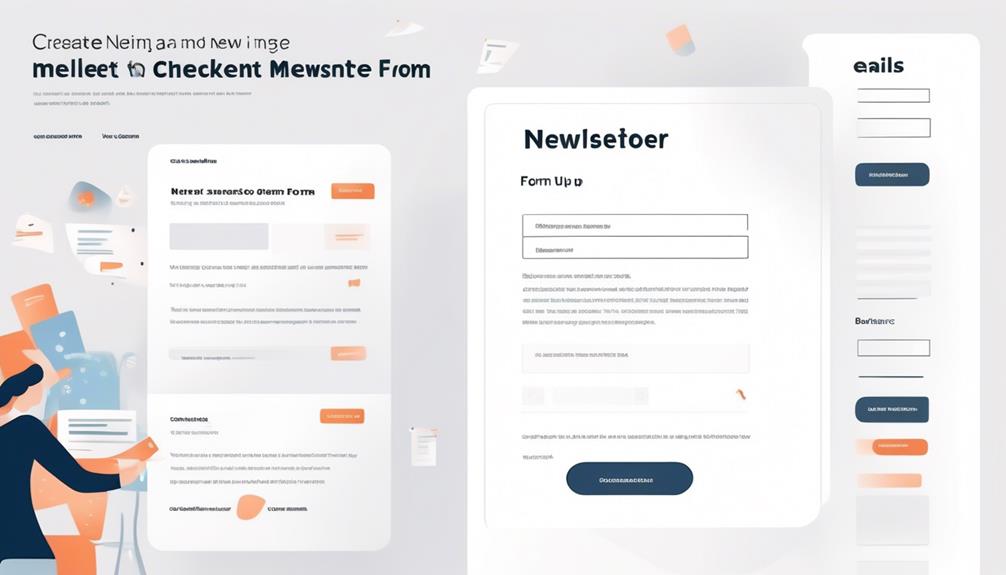
We clearly communicate the purpose of data collection and obtain explicit consent for email marketing to ensure GDPR compliance. Obtaining explicit consent from subscribers is crucial, as individuals have the right to confirm their consent before receiving marketing emails. To achieve this, we implement a double opt-in process, where individuals actively confirm their consent. This ensures that the consent obtained is valid and unambiguous. Additionally, we separate consent requests from terms and conditions, making the consent specific, informed, and clear. This practice not only aligns with GDPR compliance but also builds trust with subscribers. Moreover, providing easy opt-out options in every marketing communication and promptly honoring withdrawal of consent is essential. To maintain GDPR compliance in email marketing, we regularly review and update consent agreements. This ensures that our practices remain in line with the evolving regulatory requirements and demonstrates our commitment to respecting the privacy and preferences of our subscribers.
| Obtaining Explicit Consent Strategies | Benefits |
|---|---|
| Double opt-in process | Valid and unambiguous consent |
| Separate consent requests | Specific, informed, and clear consent |
| Easy opt-out options in every communication | Respect subscriber choices |
| Regular review and update of consent agreements | Compliance with evolving regulations |
| Clear communication of data collection purpose | Build trust and transparency |

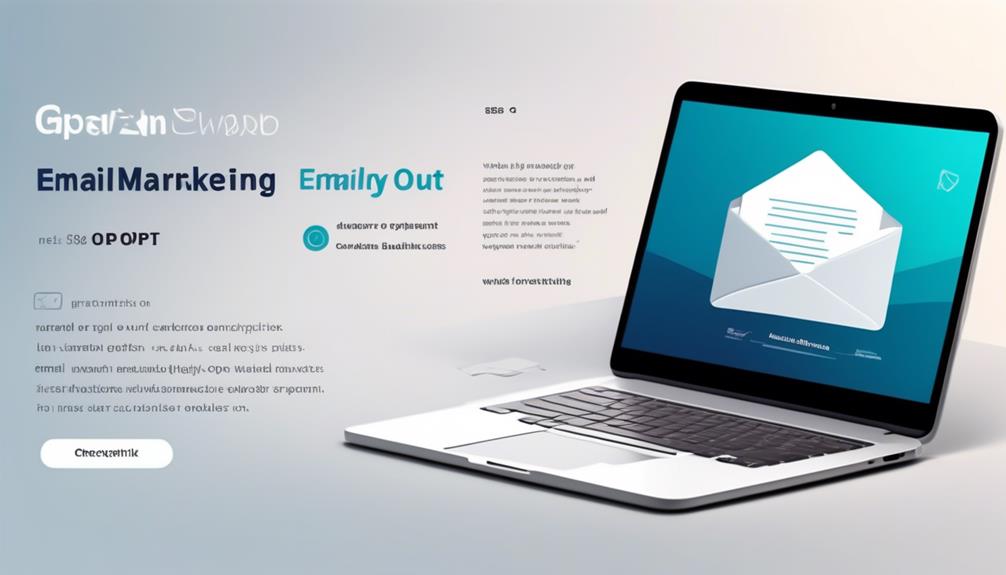
When ensuring GDPR compliance in email marketing, it's essential to obtain explicit consent from individuals before sending any marketing communications. Clearly stating the lawful purpose for collecting and using personal data in email marketing is crucial for compliance. Implementing a double opt-in process for subscribers to confirm consent adds transparency to your practices. Furthermore, providing easy and clear opt-out mechanisms in every marketing email is necessary to respect individuals' privacy rights.
Regularly auditing and cleaning mailing lists is essential to maintain GDPR compliance and build trust with customers. It ensures that data retention is in line with GDPR requirements and that only individuals who've given explicit consent receive marketing communications.
As email marketers, it's our responsibility to prioritize the security and privacy of EU citizens' data. By following these GDPR-compliant email practices, we demonstrate our commitment to data protection and build credibility with our audience. Compliance with GDPR not only safeguards individuals' privacy but also enhances the reputation and trustworthiness of our marketing efforts.
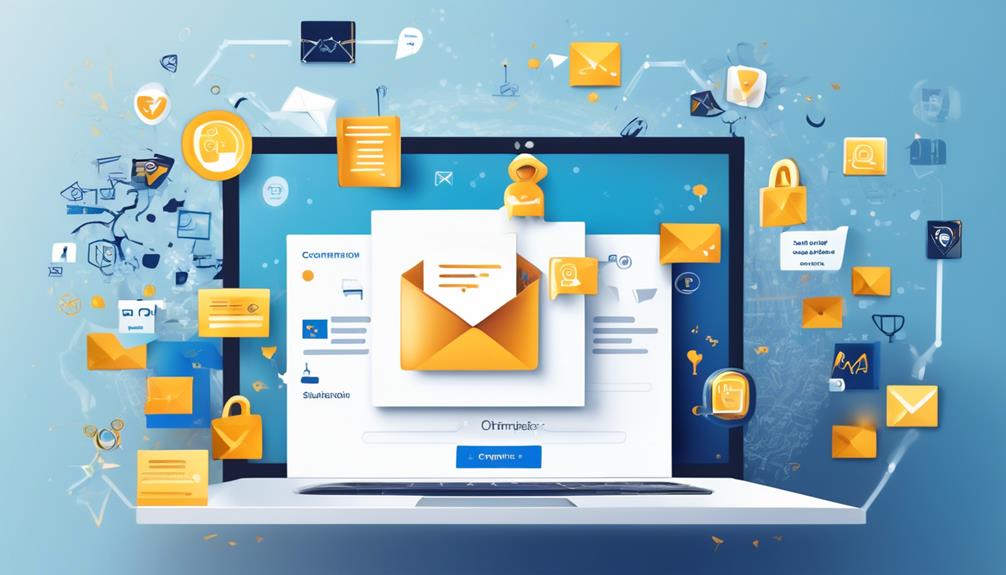
Transitioning from GDPR-compliant email practices, the implementation of Double Opt-In is a critical step for email marketers to enhance consent verification and reduce the risk of unauthorized sign-ups. Double Opt-In requires individuals to confirm their subscription twice, ensuring that they genuinely intend to subscribe and understand what they're signing up for.
In the context of GDPR and data protection, Double Opt-In is an effective method for ensuring compliance with the regulation's consent and data retention requirements, ultimately protecting the personal data of EU data subjects.

Maintaining meticulous records of consent is essential for demonstrating compliance with GDPR requirements for email marketing. As email marketers, we understand the significance of record-keeping in ensuring adherence to data protection regulations.
It's imperative to document the specific lawful basis for processing subscriber data for email marketing and to keep a record of how consent was obtained. This includes details of the opt-in method used, proof of consent, and any subsequent opt-out requests.
Regularly reviewing and updating these consent records is crucial to reflect any changes or withdrawals made by individuals, thereby ensuring that the stored information remains accurate and up to date.
AdvertisementFurthermore, it's essential to implement a robust system for capturing and securely storing consent information. This not only fulfills record-keeping obligations but also demonstrates a commitment to the security and privacy of subscriber data.
Clear and distinct consent from individuals for the processing of their personal data for email marketing purposes is a fundamental aspect of compliance. By maintaining comprehensive and secure records of consent, we can confidently comply with GDPR requirements and build trust with our subscribers.
We comply with GDPR email marketing by obtaining clear consent, offering an easy opt-out, and ensuring all data collection is transparent.
It's crucial to interpret and follow GDPR rules carefully, providing proof of consent and keeping opt-out methods simple and free-of-charge.
Our compliance hinges on adhering to specific consent requirements and implementing opt-in processes.
AdvertisementIt's imperative to understand and follow all GDPR regulations to ensure our email marketing practices are compliant.
The GDPR fine for email marketing can be substantial if organizations fail to comply with the strict regulations. It's crucial for email marketers to obtain clear consent from recipients and provide opt-out options.
Non-compliance may result in hefty penalties, as demonstrated by the €9 million fine imposed on Austrian Post.
Adhering to GDPR guidelines is essential for protecting both the organization and the privacy rights of individuals.
We ensure GDPR compliance by meeting seven key requirements.
AdvertisementThese include obtaining clear consent for data collection and email marketing, providing opt-out options, and maintaining proof of consent.
Our approach focuses on building trust with customers and engaging them while upholding legal standards.
These measures allow us to capture consent effectively and meet GDPR obligations.
We ensure GDPR compliance when sending emails by obtaining clear consent and providing opt-out options in every communication. Personal data is collected with explicit consent, and we maintain proof of consent for marketing purposes.
We remind individuals of their right to opt-out in each marketing message. These practices align with GDPR requirements for email marketing, allowing us to operate within legal boundaries and respect individuals' data privacy rights.
AdvertisementTable of Contents
Email marketers must adhere to the best practices for GDPR compliance in order to protect consumer data. Obtaining clear consent, maintaining an updated database, and providing opt-out options are crucial. Additionally, conducting regular audits and staying informed about GDPR regulations are essential for email marketers to remain compliant.
In 2024, companies that prioritize GDPR compliance can expect to see a positive impact on their email open rate forecast. By ensuring that their emails are permission-based and provide valuable, relevant content, businesses can build trust with their audience and ultimately improve their email open rate forecast.
In conclusion, implementing GDPR compliance tips for email marketing is crucial for maintaining trust with our audience.
Did you know that 67% of consumers are more likely to engage with brands that prioritize their data privacy?
By following best practices, we can build stronger relationships with our subscribers and ensure that our email marketing efforts are both effective and compliant.